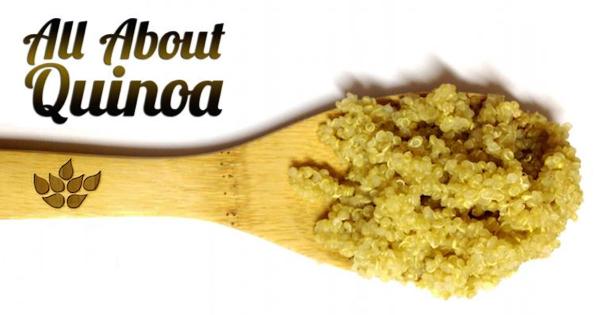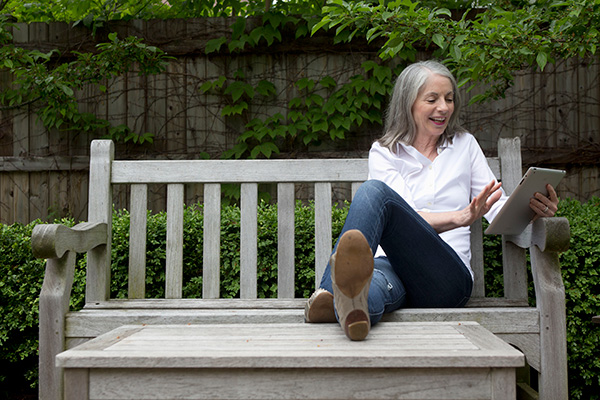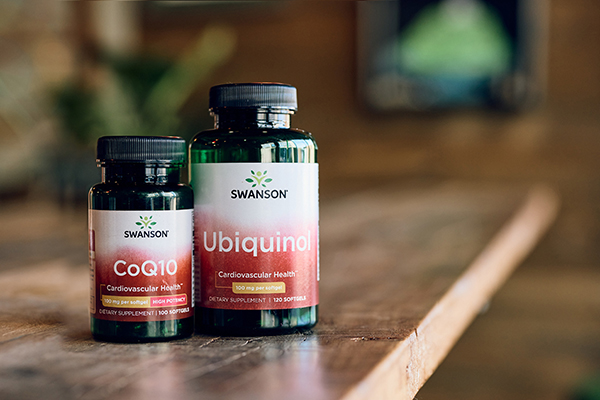If you've read any of my blog posts, you've probably learned about my obsession with food and trying new recipes. I first ate quinoa when I traveled to Peru on a high school Spanish trip. The texture and taste being what they are, I just assumed it was couscous, enjoyed it, and moved on with my little 15-year-old life.
Now, being the wizened woman that I have become, I have loved every second of my healthful awakening and food has been my greatest joy. I have found ways to retrain my mind and body to control cravings and alter recipes to suit my lifestyle choices without compromising flavor and happiness! One healthful change I have made is switching out rice-based dishes for quinoa! Read on for a little quinoa history lesson, nutritional value information, health benefits and, of course, recipes!
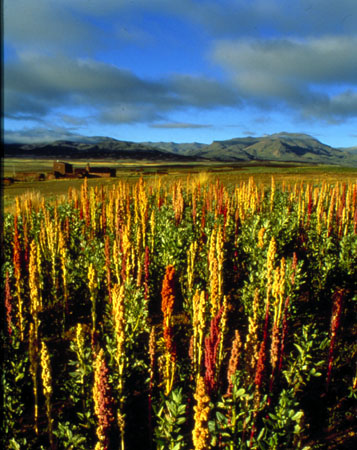
History of Quinoa
The history of quinoa is rooted in South America, in the Andes region that is currently divided between Argentina, Bolivia, Chile, Colombia, Ecuador and Peru. Along with maize, quinoa was one of the two mainstay foods for the Incan Empire that had its start around 1200 AD. Quinoa was a food that could survive a wide variety of growing conditions. Along with its unusual nutrient richness, its adaptability helped it gain popularity among the Incas for hundreds and hundreds of years.
Most quinoa consumed in the United States still comes from South America! Peru remains the largest commercial producer of quinoa, harvesting 41,079 metric tons in 2010. And the second largest provider is Bolivia. In terms of export sales, quinoa has risen to the level of an $87 million dollar business in these two countries. In the United States, the Colorado Rockies have been a place of special interest for quinoa products, and some production has also occurred in the states of California, Washington and Oregon.
Quinoa Nutrition Facts
Quinoa is typically regarded as an adequate source of all essential amino acids, including lysine and isoleucine. It provides a variety of antioxidant phytonutrients, including ferulic, coumaric, hydroxybenzoic and vanillic acids. Antioxidant flavonoids including quercetin and kaempferol are also especially plentiful in quinoa. Quinoa will provide 43% of your daily value for manganese, 21.8% of your tryptophan, 20.9% of your magnesium, 19.5% of your folate, and 19.4% of your daily phosphorus.
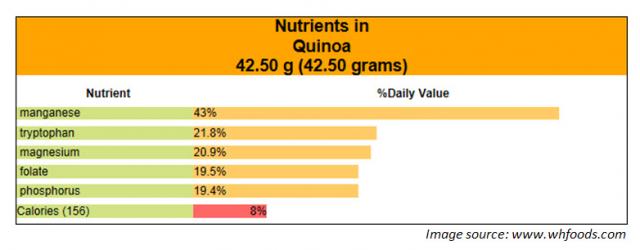
What Are the Health Benefits of Quinoa?
The most impressive benefit of quinoa is its overall nutrient content, obviously. Close examination of quinoa shows that is lacking in protein, like most grains. But what is unusual about quinoa, when compared to other grains, is that it has significantly greater amounts of both lysine and isoleucine, and these greater amounts of lysine and isoleucine allow the protein that is in quinoa to serve as a complete protein source! Bizarre, right?
Then throw into the mix the fact that quinoa outdoes other grains in the fat content area because it only takes 63 calories worth of quinoa to provide 1 gram of fat! Quinoa is typically considered to be a valuable source of certain health-supportive monounsaturated fats and about 8% come in the form of alpha-linolenic acid (or ALA), the omega-3 fatty acid most commonly found in plants!
Quinoa also has significant amounts of certain tocopherols (vitamin E family members) largely absent from most grains. One cup of quinoa provides 2.2 milligrams of gamma-tocopherol, a form of vitamin E that has been closely associated with certain health benefits. Quinoa is also a good source of RDA nutrients like folate, copper, and phosphorus in contrast to whole wheat! And finally, calcium! Calcium is especially concentrated in quinoa in comparison to other grains. On an ounce-for-ounce basis, quinoa provides over twice the amount of calcium that is found in whole wheat.
How to Cook Quinoa
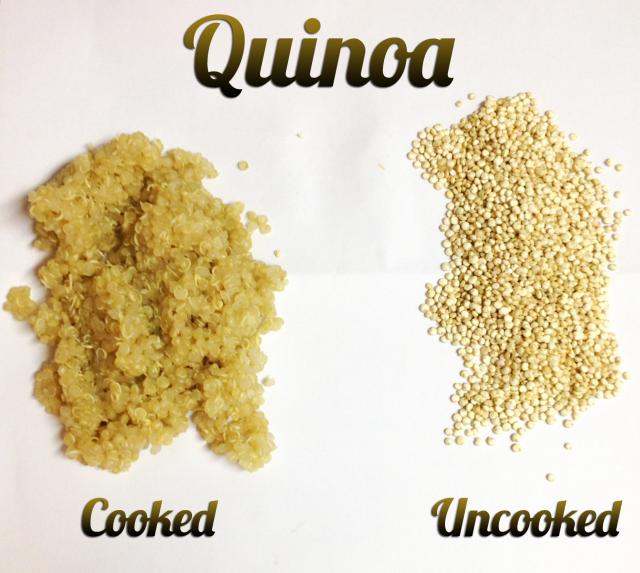
One part grain to two parts water (I’ve even replaced one part of the water with stock to add a bit of flavor). Boil... Reduce heat... Then simmer for approximately 12 minutes. When it’s ready you’ll see that the white germ has partially detached itself, appearing like a white-spiraled tail. In my humble opinion, I recommend replacing rice in your diet with quinoa! It’s the perfect substitute! It’s the perfect food for gluten-free diets because it is such an incredibly versatile grain! It is great to add to soups, salads, stir-fries and it can even be baked!
Quinoa Recipes
Here are three fun and very different quinoa recipes that I've made and loved! First up...Quinoa Chia Bread, amazing for its incredible versatility (see pictures below). Sweet? Savory? It can do either!
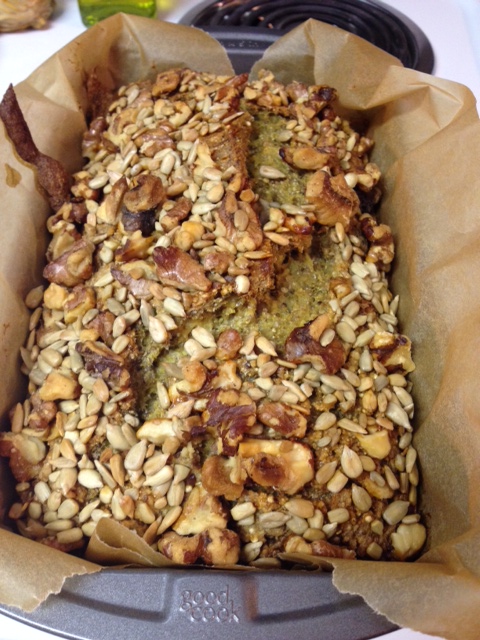
Ingredients:
- 2 cups quinoa
- 3/4 cup chia seeds
- 3 tbsp lemon juice
- 1 tsp baking soda
- 1 tsp agave syrup
- 1/4 cup extra virgin olive oil
- 1/2 cup mixed pumpkin, sunflower & linseeds
Step 1: The night before you plan on baking the bread you need to soak the quinoa & chia seeds. Measure out the quinoa and chia seeds and place in two separate bowls. Cover the chia seeds with 1 cup of water, and the quinoa with enough water to cover well. Place both in the fridge overnight.
Step 2: Preheat the oven to 320° F. In a blender, add all ingredients aside from the mixed seeds. Blend until the mixture is smooth, but you can still see lots of whole quinoa. (It is very important not to over blend as you will get a very sticky bread). Then add the mixed seeds. Pour the mixture into a bread tin lined with parchment paper. Bake for 70 minutes.
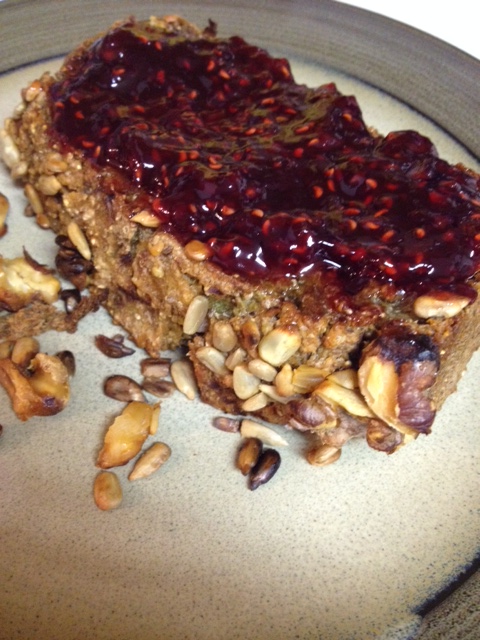
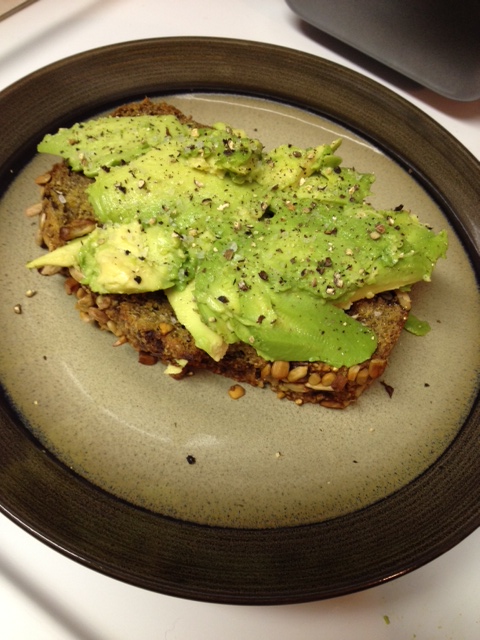
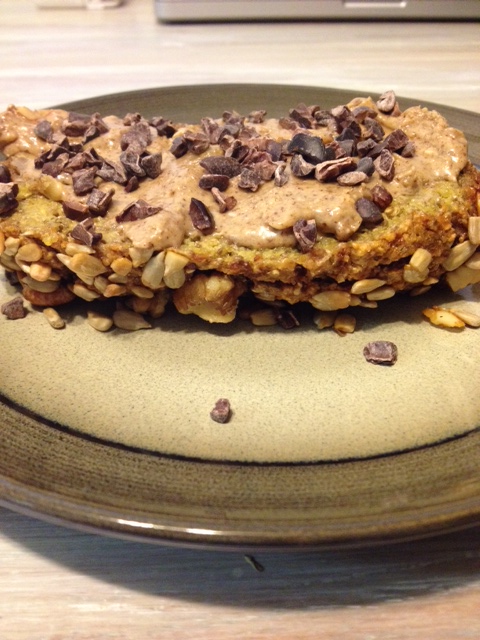
Pumpkin Spice Quinoa Bake is not the prettiest recipe in the world, but it certainly is delicious!
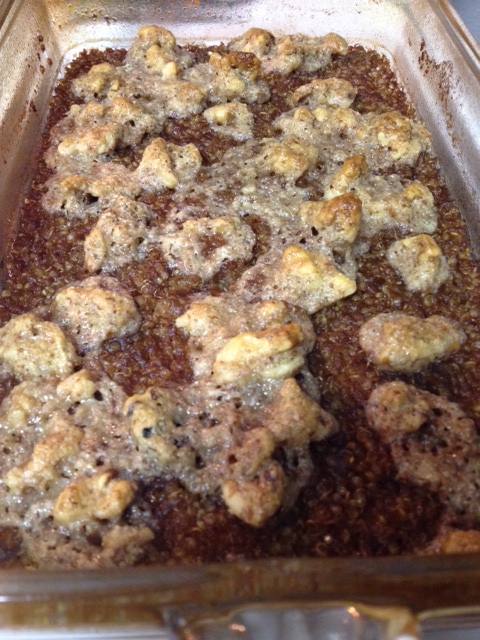
Ingredients:
- ⅔ cup warm water
- ⅓ cup brewed coffee, hot or warm
- 2 tablespoons canned pumpkin puree (not pumpkin pie mix!)
- 1 tablespoon maple syrup
- 1 teaspoon coconut oil, melted
- ¼ teaspoon pure vanilla extract
- 1 teaspoon pumpkin pie spice
- ¼ cup raw quinoa
Topping:
- ¼ cup raw pecans, chopped
- 2 tablespoons almond flour
- 2 tablespoons maple syrup
- 1 tablespoon coconut flour
- ½ teaspoon cinnamon
- Pinch salt
- 1 tablespoon coconut oil
Directions:
Preheat oven to 350° F. Add water, coffee, pumpkin puree, maple syrup, coconut oil, vanilla and pumpkin pie spice to a 4-cup casserole dish. Stir to combine. Then add quinoa. Cover and bake for 45-50 minutes until most of the liquid is gone (see picture below for example). There should still be some liquid left and the quinoa should be just about cooked.
Meanwhile, add pecans, almond flour, maple syrup, coconut flour, cinnamon and salt to a small bowl. Mix to combine, then mix in coconut oil. Place the bowl in the freezer until ready to use.
Once the quinoa is done baking, remove from oven, take off the cover and top with the crumbled topping. Return to oven, uncovered and bake for 12-15 minutes until the topping browns.
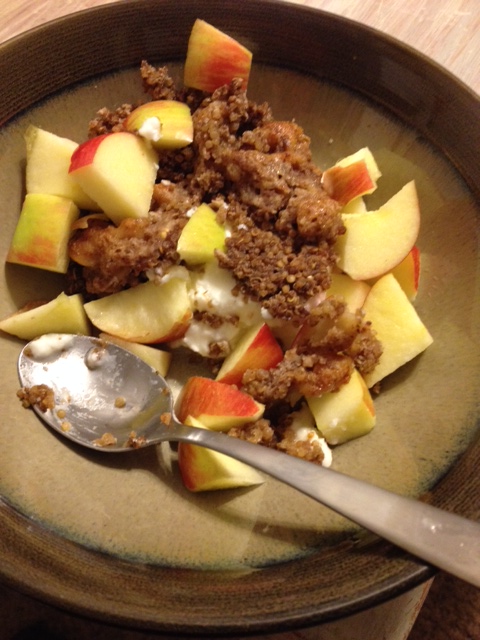
Turkey & Quinoa Stuffed Peppers... definitely look and taste delicious!
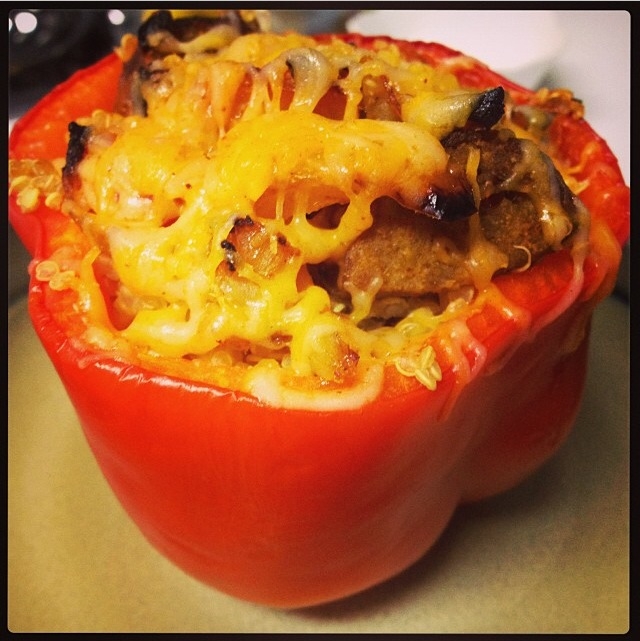
Ingredients:
- 1 cup water
- 1 cup preferred stock/bouillon base
- 1 cup quinoa
- Lots of veggies! (bell peppers, onion, garlic, hot peppers, zucchini, etc.)
- 2 tablespoons extra virgin olive oil
- 1 tsp cumin
- 1 tsp red pepper flakes
- Salt and pepper to taste
- 1 pound ground turkey or turkey sausages
Directions:
Boil 1 cup water and 1 cup preferred stock with 1 cup quinoa. As that’s boiling, chop and sweat your vegetables in olive oil and add spices. Brown your ground turkey or boil/brown your turkey sausage.
Once all the above is complete mix quinoa with veggies and meat and stuff the peppers. Place the stuffed peppers in a pie tin and top with cheese or breadcrumbs, if you’d like! Then put a half-cup of water in base of pie tin (this keeps the moisture in peppers).
Bake at 350° F for about 20-25 minutes.
Sources:
http://www.whfoods.com/genpage.php?tname=foodspice&dbid=142
http://www.quinoa.net
http://nutritiondata.self.com/facts/cereal-grains-and-pasta/10352/2

